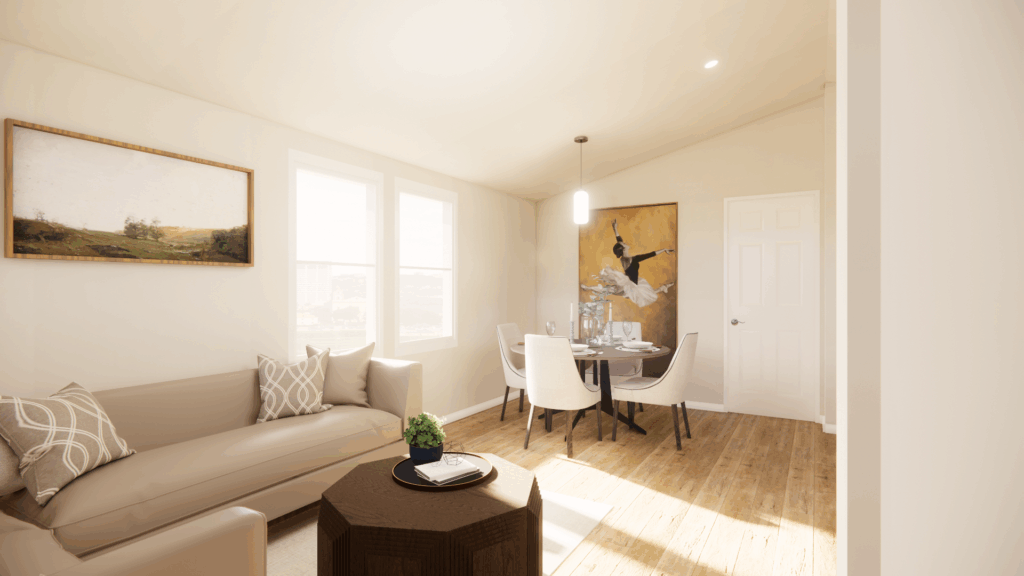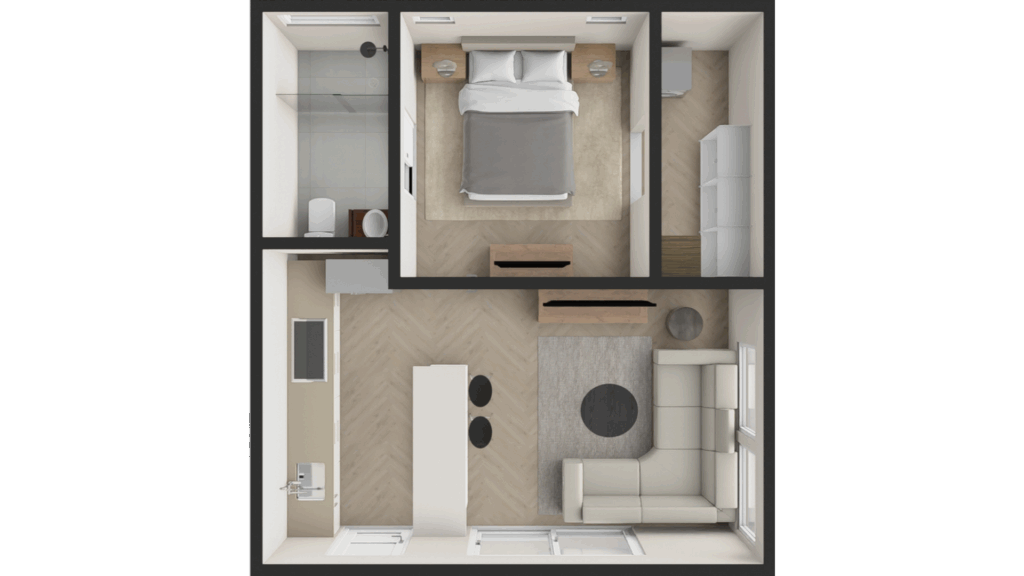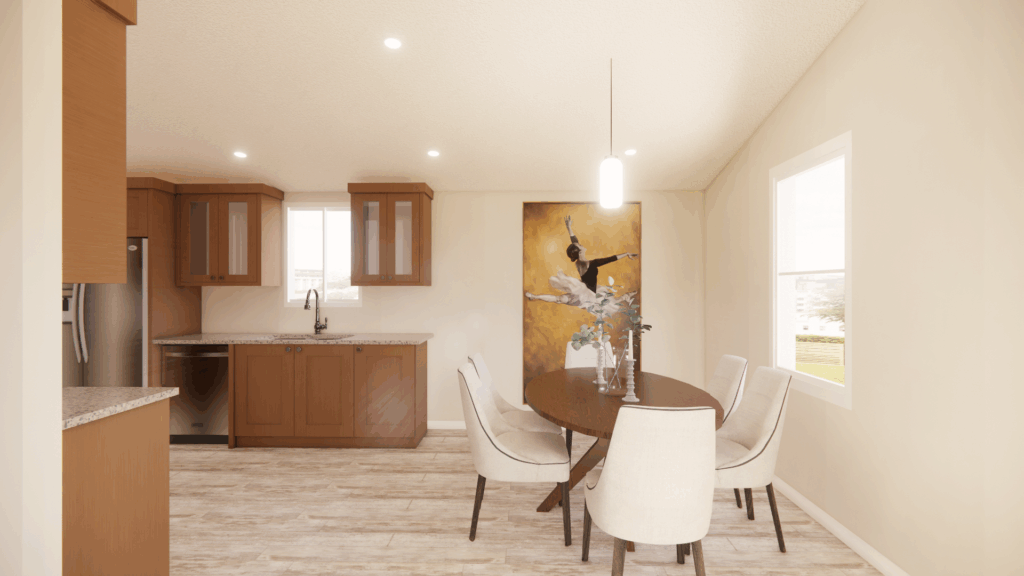Prefab Homes vs. Traditional Construction:
What’s Faster, Cheaper & Smarter?
Brandon Hustlar June 21st 2024
In today’s rapidly evolving housing market, the debate between prefabricated (prefab) homes and traditional construction methods has gained significant traction. As homebuyers seek efficient, cost-effective, and sustainable solutions, understanding the distinctions between these two approaches becomes crucial. This comprehensive guide delves into the nuances of prefab homes versus traditional construction, highlighting the advantages and considerations of each.
Understanding Prefab Homes
Prefab homes are residences constructed off-site in controlled factory environments and then transported to their final location for assembly. This category encompasses various types, including modular homes, panelized homes, and manufactured homes. The primary goal of prefab construction is to streamline the building process, reduce waste, and offer customizable housing solutions.

Speed of Construction
Prefab Homes: Accelerated Timelines
One of the most significant advantages of prefab homes is the drastically reduced construction time. Since components are manufactured simultaneously in a factory setting, the on-site assembly can be completed in a matter of weeks. For instance, a 2,000 sq.ft modular home can be weatherproofed in 3 weeks, compared to the 6–12 months typically required for traditional builds.
Traditional Construction: Extended Durations
In contrast, traditional construction is susceptible to delays caused by weather conditions, labor shortages, and unforeseen site challenges. The sequential nature of on-site building processes often extends project timelines, leading to prolonged periods before occupancy.
Schedule a complimentary call with an ADU specialist
Cost Implications
Prefab Homes: Cost-Efficient Solutions
Prefab construction offers notable cost savings due to:
• Bulk Material Purchasing: Factories can procure materials in large quantities at discounted rates.
• Reduced Labor Costs: Controlled environments require fewer workers, minimizing labor expenses
• Minimal Waste: Precision engineering leads to less material wastage, further cutting costs.
These factors contribute to prefab homes being 10–25% cheaper than their traditional counterparts.

Traditional Construction: Variable Expenses
Traditional builds often encounter fluctuating costs due to:
• Material Price Volatility: Market dynamics can lead to unexpected increases in material costs.
• Extended Timelines: Delays can escalate labor and equipment rental expenses.
• Change Orders: On-site modifications can introduce additional costs.
These variables can make budgeting for traditional construction more challenging.
Quality and Durability
Prefab Homes: Consistent Quality Control
Constructed in regulated environments, prefab homes benefit from:
• Standardized Processes: Ensuring uniform quality across all units.
• Advanced Technologies: Utilization of robotic fabrication and laser-guided cuts for precision.
• Weather Protection: Indoor construction shields materials from environmental damage.
These factors contribute to the enhanced durability and longevity of prefab homes.
Prefab Homes: Consistent Quality Control
• Weather-Related Issues: Rain, snow, or extreme temperatures can affect material integrity.
• Labor Inconsistencies: Variations in craftsmanship can lead to quality disparities.
• Site Challenges: Unforeseen ground conditions can impact structural stability.
These factors can influence the overall quality and lifespan of the structure.

Got more questions? Book a free call with one of our experts.
Environmental Impact
Prefab Homes: Sustainable Practices
Prefab construction is inherently more eco-friendly due to:
• Reduced Waste: Efficient use of materials minimizes landfill contributions.
• Energy Efficiency: Tight seams and advanced insulation lower energy consumption.
• Lower Emissions: Shorter construction times and centralized manufacturing reduce carbon footprints.
These attributes make prefab homes an attractive option for environmentally conscious buyers.
Traditional Construction: Higher Environmental Costs
Traditional building methods often result in:
• Material Waste: On-site cutting and adjustments lead to excess waste.
• Extended Equipment Use: Longer build times increase energy consumption.
• Site Disturbance: Extensive excavation and construction can disrupt local ecosystems.
These factors contribute to a larger environmental footprint.

Customization and Design Flexibility
Prefab Homes: Modern and Adaptable Designs
Contrary to outdated perceptions, modern prefab homes offer:
• Diverse Architectural Styles: From minimalist to contemporary designs.
• Modular Configurations: Ability to add or remove sections based on needs.
• Personalized Interiors: Customization of finishes, fixtures, and layouts .
This flexibility allows homeowners to tailor their living spaces to specific preferences.
Traditional Construction: Unlimited Customization
Traditional methods provide unparalleled design freedom, enabling:
• Unique Architectural Features: Custom-built elements to match personal tastes.
• Complex Structures: Ability to construct intricate designs and layouts.
• Material Choices: Wide selection of building materials and finishes.
However, this level of customization often comes with increased costs and extended timelines.

Financing and Resale Value
Prefab Homes: Emerging Financial Recognition
As prefab homes gain popularity, financial institutions are:
• Expanding Loan Options: Offering mortgages tailored to prefab constructions.
• Recognizing Resale Potential: Acknowledging the appreciating value of modern prefab homes.
However, some lenders may still have reservations, necessitating thorough research.
Traditional Construction: Established Financial Pathways
Traditional homes benefit from:
• Widespread Lender Acceptance: Easier access to various mortgage products.
• Predictable Resale Trends: Historical data supports property value appreciation.
These factors provide financial stability for homeowners.
Got more questions? Book a free call with one of our experts.
Conclusion: Making the Smart Choice
When evaluating prefab homes versus traditional construction, it’s evident that prefab homes offer:
• Faster Construction: Accelerated timelines reduce waiting periods.
• Cost Savings: Efficient processes lower overall expenses.
• Sustainable Practices: Eco-friendly methods align with modern values.
• Quality Assurance: Controlled environments ensure consistent standards.
While traditional construction provides unmatched customization and established financial pathways, prefab homes present a compelling alternative for those prioritizing efficiency, affordability, and sustainability. As the housing industry continues to evolve, prefab homes are poised to play a pivotal role in shaping the future of residential living.
Prefab Homes
hello@homeplex.net
(424) 428-8000
145 W Broadway
Long Beach, CA 90802
DRE #02186195
© 2025. All rights reserved. HOMEPLEX, The New American Dream are registered trademarks of HOMEPLEX, INC.


